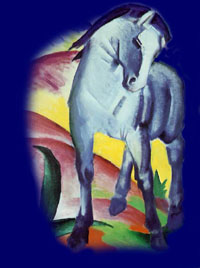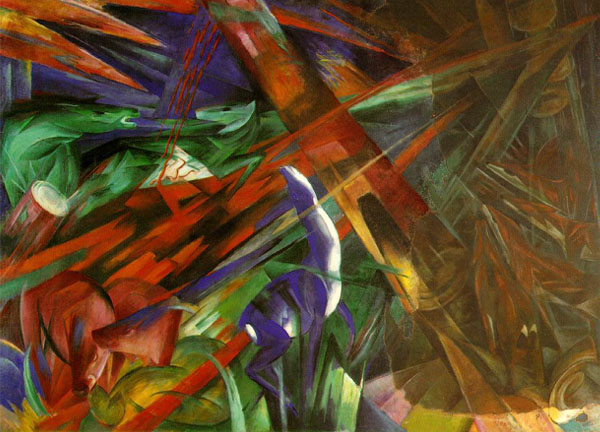 |
||||
|
|
|
|
|
|
| |
||||

While
associated with the Blue Rider group, Marc emphasized two major themes
in his work. He believed that all humans desired to return to the instinctual,
animalistic past- a time in which society was free from moral restriction.
According to Marc, man disturbed the harmony that existed in nature. Though
a part of nature, man possessed the quality of awareness- of self, of
the past and future, and of the certainty of death- that animals lacked.
It was this awareness that conflicted with the unity of the world.
Thus it was regression toward primitive beginnings that would lead to
the second theme, the apocalypse. The removal of the individual and breakdown
of traditions would cleanse the universe. Through an apocalypse, Marc
and the other German Expressionists wished to unite all the components
of the universe through a destruction and elimination of institutions
and traditions. Thus, man would be uninhibited to reveal their primitive,
instinctive behavior. In Fate of Animals (1913), Marc depicts an
agitated scene inspired by the Biblical verse in Apocalypse: “The
trees showed their rings and the animals their veins.

Fate of Animals (1913)